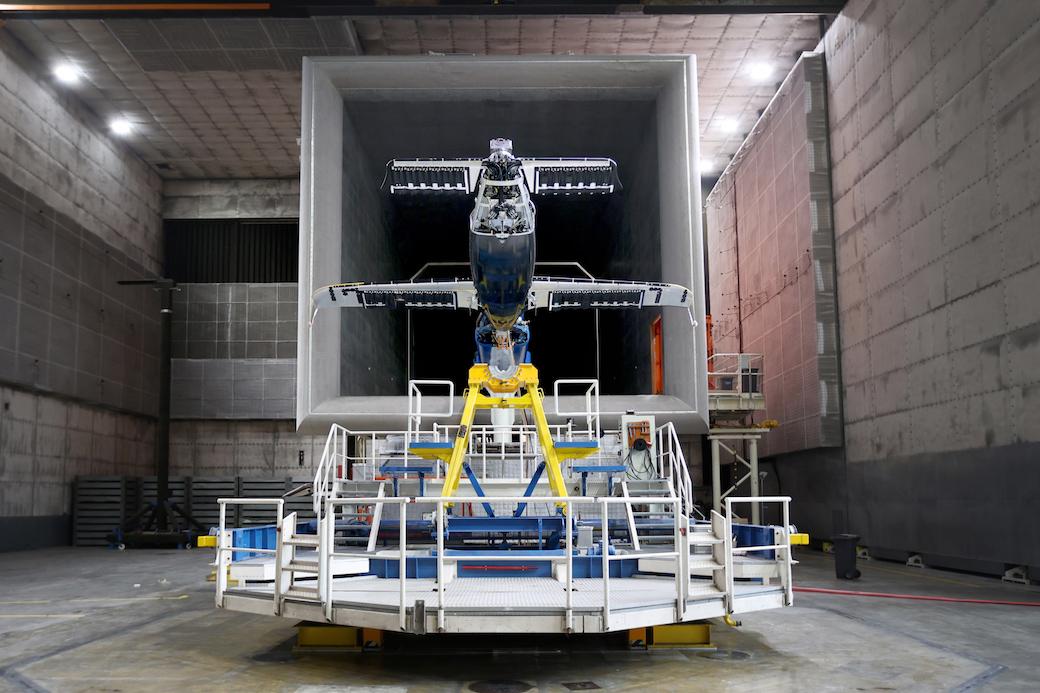
When Daniel Schubeler began working on electric ducted fans in 1997, the technology was in a nascent stage. Batteries at the time were far too heavy and more-efficient brushless motors were not yet widely available, restricting the fan’s application to smaller remote aircraft mainly for the hobby industry.
As time progressed, Schubeler began to incorporate the fan systems into drones and other small aircraft for wind tunnel tests and research purposes. But the big break came when an advanced air mobility startup approached the company in several years ago seeking to collaborate on an electric vertical-takeoff-and-landing (eVTOL) prototype, an effort that opened up many possibilities to supply the new, fast-growing aviation sector.
“We started Schubeler without having a business case or purpose in mind; it was founded on the idea to create the perfect electric ducted fan propulsion system,” says Schubeler, the company’s founder and CTO.
“It has been very rewarding for me, personally, to see the interest coming from the eVTOL sector, because this was a business I started based on nothing but my own passion,” he says. “And in the end, it turned out to be a very viable business with really big interest. Over the past 20 years, we were building smaller systems; now they are growing in size and dimension, and that’s very rewarding to see.”
The company’s first product specifically targeting the AAM market is the eP05-21 electric ducted fan, which is designed for both manned and unmanned eVTOLs. With a roughly half-meter diameter, 21 kW of DC power input, 680N static thrust, sub-60V architecture and speed range from zero to 45 meters per second, the scalable fan architecture is an ideal fit for larger air taxis and their related subscale demonstrators without tilting rotors that fall in the four-to-six seat range, Schubeler says.
“We have a very quiet and robust propulsion system that is field-proven, and we combine that with a very low-complexity approach,” Schubeler says. “We have an air-cooled electric motor, we have fixed blades with no variable-pitch, and we have a pretty simple architecture which allows us to succeed in certification in terms of safety and noise and is scalable in terms of production.”
One of the first applications for the eP05-21 is in a 60-percent powered subscale demonstrator employed by one of the most successful German eVTOL companies. The product is a great fit for the subscale prototype, which is highly efficient when operating at medium speeds of up to 35 meters per second, according to Schubeler. Because of the scalable nature of the ducted fan propulsion system, including the electric motor, Schubeler said the system can integrate more power, increase RPM and enlarge the flight envelope for a larger and more capable platform. “We can use the same technology and grow in diameter, in power and then fulfill the upcoming demand of eVTOLs which require higher thrust because you have four-, five- or six-seater planes which require five or six kN of thrust,” Schubeler says. “This is a business case which we can clearly see coming up.
Besides that application, fellow German company Lilium is using an advanced 800V version of one of the smaller Schubeler electric fans in its wind tunnel test campaign at the German-Dutch Wind Tunnels (DNW) facility in Marknesse, Netherlands.
“Lilium has been relying on our technology throughout the wind tunnel campaign; they need a very high power fan, so you need to have a very high gravimetric power density and a very compact package,” Schubeler says. “They also demand reliability; they run the fans at full-speed all the time, and such a campaign is going for multiple hundreds of hours. This is their basic requirement, and it’s what we’ve delivered them.”
Schubeler also observed that ducted fans are an efficient match for medium- to higher-speed aircraft, which he predicts will increase interest in the concept in coming years as successive generations of batteries yield increasingly powerful results.
“Fan propulsion is a superior technology for eVTOL planes already as of today and with availability of better batteries, I see these planes flying faster to reduce mission time, so it becomes more and more interesting to look into shrouded electric propulsion," he says.
In addition to electric ducted fans, the company also offers compressor drives, electric motors, propellers and controllers, among other aerospace components, according to Schubeler.
